Duke of Istria
Pronunciation:
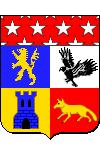
Jean-Baptiste Bessières was born on August 6, 1768 in Prayssac , near Cahors, Quercy [now Lot], to a father who was a doctor. He had just completed his medical studies when the Revolution made him an officer in the National Guard. He was first assigned to the king's constitutional guard, then, when this corps was disbanded, moved to the Pyrenees army, where he came to the attention of Charles Augereau.
In 1796, he was transferred to the Army of Italy, where, following the Cremona affair, he was given command of the company of guides. This corps, responsible for protecting the general-in-chief, was to become the embryo of the future consular and then imperial guard. Bessières remained attached to it for the rest of his life.
Napoleon Bonaparte naturally took this exceptionally brave soldier with him to Egypt, where he had several times had him cited in the army order for his exploits. Nor did he part with him when he left the country on the sly, the hour of the coup d'état having struck. And so it was that, on 18 Brumaire, Bessières was entrusted with the task of providing close protection for his general.
Appointed commander of the horse grenadiers of the consular guard, he was promoted to brigadier general a month after his charge at Marengo. Divisionnaire in 1802, marshal in 1804, he commanded the guard cavalry at Austerlitz, where his charge, which toppled the Russian imperial guard, was one of the great moments of the battle.
He distinguished himself again at Preussisch-Eylau in February 1807, then in Spain, winning the battle of Medina del Rio Seco on July 14, 1808.
Recalled for the war against Austria, Bessières crushed enemy cavalry at Landshut (April 21, 1809) and became Duke of Istria in May.
A short stay in Spain in 1811, where he refused to support André Masséna against Duke of Wellington, added nothing to his glory and earned him an acerbic remark from Napoleon I.
Still at the head of the Guard cavalry, he distinguished himself during the
Russian campaign, clearing the Emperor's headquarters attacked by eight thousand Cossacks at Maloïaroslavets on October 24 and 25, 1812.
In 1813, Napoleon I gave him overall command of the army's cavalry for the German campaign. But as soon as hostilities began, on May 1, a cannonball pierced his chest at Rippach , near Weißenfels, Saxony-Anhalt, Germany.
Marshal Bessières' remains lie at Les Invalides, in the crypt of the governors of Saint-Louis cathedral (Paris), and his heart inside the Prayssac church .
"Marshal Bessières, Duke of Istria" by Henri-François Riesener (Paris 1767 - Paris 1828).
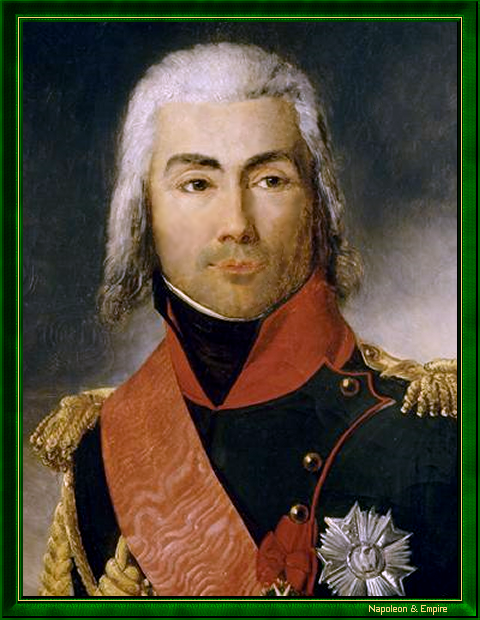
A similarity of origin (both from the Lot), career and intrepidity has often led to comparisons between Bessières and Joachim Murat. But just as Bessières was outspoken and fiery, Murat was taciturn and thoughtful. Napoleon I, while recognizing his qualities, found Bessières a little cold: he had less of what Murat had too much. This did not prevent the Emperor from helping the Duke of Istria's destitute widow, nor the captive of St. Helena from including his son in his will.
Bessières' name is inscribed on the 13th column (east pillar) of the Arc de Triomphe de l'Etoile , while a full-length statue of the Duc d'Istrie by Louis Latour honors his memory on the north façade of the Louvre, rue de Rivoli , and another pays tribute to him in his hometown .
Freemasonry: Marshal Bessières was registered on the roll of the Sacred Order of the Sophisians, which suggests that he was a Freemason, although there is no formal proof of this.Detailed military career
established by Mr. Eric Le Maître, put online with his kind permission.Wounded in action
Mortally wounded by a cannonball at Rippach, May 1, 1813.
Captivity
NoneFirst engagement
In the grenadiers of the national guard of Prayssac.
Career development
Warrant Officer, December 1, 1792.
Lieutenant, May 10, 1793.
Captain, May 8, 1794.
Provisional squadron leader, September 4, 1796, confirmed March 4, 1797.
Brigade commander, March 9, 1797.
Brigadier General, July 18, 1800.
Major General, September 13, 1802.
Maréchal d'Empire, May 19, 1804.
Colonel-General commanding the Imperial Guard cavalry, July 20, 1804.
Service record
In the King's constitutional guard, April 7, 1792.
Hunter in the Pyrenees legion, November 1, 1792.
Army of the Pyrenees, then of the Pyrénées Orientales, from 1792 to 1795.
With the 22nd chasseurs, May 8, 1794.
Army of Italy, 1796-1797: Commander of the General-in-Chief's guide company.
Army of the East, 1798-1799: Commander of the General-in-Chief's guides, May 1798.
Participates in 18 Brumaire alongside Napoleon Bonaparte.
Commanded the Corps législatif guard, November 30, 1799.
Commanded the horse grenadiers of the Consular Guard, December 2, 1799.
Second-in-command of the Consuls' Guard, July 18, 1800.
Commander-in-chief of the cavalry of the Consuls' Guard, November 20, 1801.
Commander of the Imperial Guard cavalry, July 20, 1804.
With the Grande Armée, 1805 campaign: Commander of the Guard cavalry, August 30, 1805.
Head of the 2nd reserve cavalry corps, December 13, 1806.
Commander of the Imperial Guard in Poland, January 12, 1807.
Same position in Spain, March 19, 1808.
Commander-in-chief of the 2nd corps of the Spanish army, September 7, 1808.
Chief of the cavalry reserve in the Spanish army, November 9, 1808.
Commander of the northern provinces of Spain, January 17, 1809.
Commander of the cavalry reserve in Germany, April 10, 1809.
Superior commander of the 16th military division, August 8, 1809.
Commander-in-Chief of the Army of the North in place of Bernadotte, September 11, 1809.
Commander of the Imperial Guard in Paris, January 19, 1810.
Commander-in-Chief of the Army of Northern Spain, January 15, 1811.
With the Grande Armée, 1812 campaign in Russia: Commanded the Guard cavalry, May 1812.
Main Army: Commanded the Imperial Guard, April 10, 1813.
Remerciements
We express our gratitude to Major General Christian Baptiste, Director of the Army Museum, who granted us access to the Governors' Vault of the Saint-Louis des Invalides Cathedral, and to Mr. Mickaël Blasselle, who guided us for this visit in December 2011.The photo of the full-length statue of the Duke of Istria, rue de Rivoli in Paris, was kindly provided to us by Mr. Cyril Maillet.
Other portraits
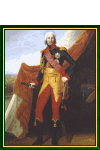
Enlarge
"Marshal Bessières". Lenght portrait by Henri-François Riesener.
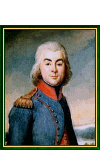
Enlarge
"Jean-Baptiste Bessières in 1792" by Jean-Baptiste Paulin-Guérin (1783-1855).
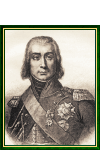
Enlarge
"Marshal Bessières". Nineteenth century engraving.